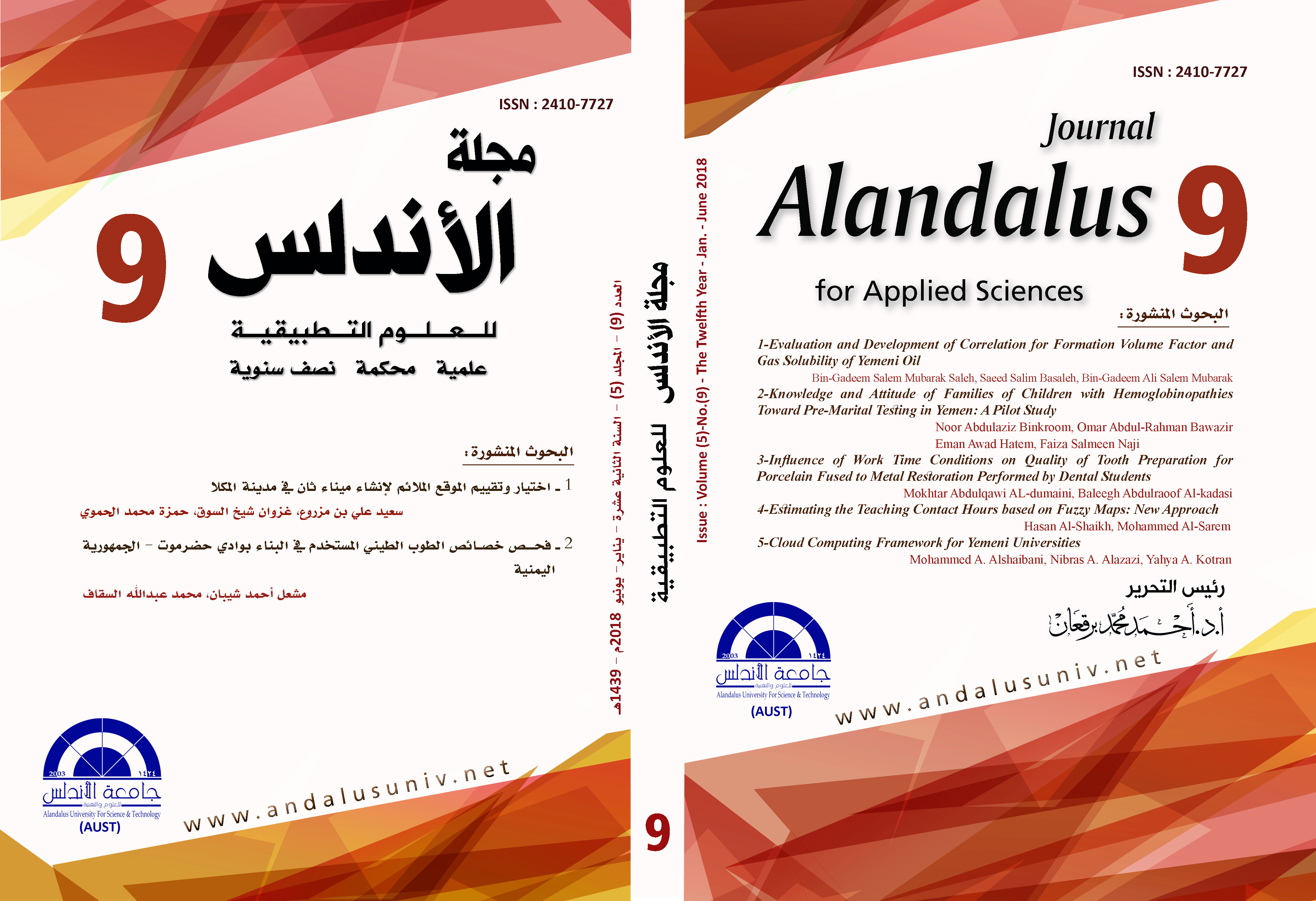Cloud computing framework for Yemeni Universities al-Shaybani, Muhammad A. al-Azzazi, Nibras A. Qatran, Yahya A.
Main Article Content
Abstract
Cloud computing is considered in three out of ten top strategic technology trends for 2014 year according to Gartner[1].
It is the green field for all IT researcher to develop our Higher Education (HE).
The Universities in this time is becoming completely dependent with the IT on their teaching-learning, communication, service delivery, and business requirements.
Although the rapid growth of Cloud Computing, It is only 4% of cloud computing used in education and the other 96% is related to industrial sectors and services.
[2] The adoption of Cloud computing in educational settings can provide great opportunities for reduction of in-house data centers and the delegation of a portion or all of the Information Technology infrastructure capability to a third party, whereby shared resources, software and information, are provided to computers and devices on-demand, like the electricity grid,in addition of giving the opportunity for students and teachers to quick access to various applications, systems and resources through the Internet - any time anywhere -, and share files and documents, and the exchange of duties and projects among students ”improving their learning outcomes”.
Meanwhile, all of services on Cloud Education can be accessed using any devices such as mobile phones, computers, and tablet computers.
Despite all of advantages of cloud, computing it still not fully adopted in academic institutions sector.
Hence, this thesis discussed the advantages of cloud computing for higher educations, and it identifies the reasons for the slow rate of adoption of cloud computing in Yemeni universities, discussed the challenges of cloud computing and proposed five stages as a roadmap to help the universities to do self-assessment before adopted the cloud computing and finally design Framework called CCFYU (Cloud Computing Framework for Yemeni Universities) for the successful entrance to the portal of universities cloud computing.
The technology–organization–environment (TOE) framework has been used as the technology innovation adoption.
The case study of the thesis are Alandalus university, sana’a university and Science and Technology university, and the data sources are interview in Yemen net that is the ISP for Yemen, and the researcher engaged the heads of the various companies selected for this study likes Yemen soft and Natco companies to establish relationship with them and get benefit from them, and makes interview with the IT support for university and make offline questionnaires of some employees and teachers, and is analyzed through SPSS statistical Software.
All that for Evaluation the readiness of Yemeni universities to use cloud computing and to help overcome the challenges of transition for secure cloud computing or safety migration through CCFYU.
The thesis recommended that Yemeni universities can adopt Cloud Computing, and can overcome most of the limitations, if they are be attention about the side of IT human resource through training, the desire of top management and the country to cloud computing technology adoption, and the main priority attention of the privacy and security strategies to avoid any attack of data, through following the suggest roadmap and framework which is hybrid cloud.
